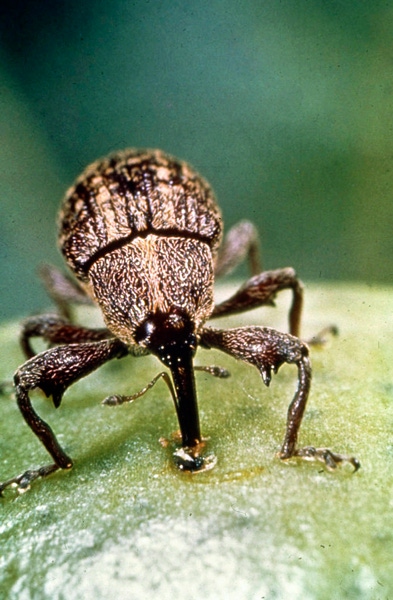October 15, 2010

Canute, Okla., farmer Ron Whittenberg remembers when his cotton crop prospects helped him decide on boll weevil control.
"If my crop was a good one," he said, "I would use an insecticide to kill the weevils. But if the crop didn't look too good, it was not profitable to try to control them."
That was back in the days when the boll weevil nearly killed the U.S. cotton industry, particularly where dryland cotton production depended on how much rainfall was received each season.
Whittenberg served on the first Oklahoma Boll Weevil Eradication Association elected board of directors. Today, with the end of boll weevil depredations in sight, he’s still a member of the Oklahoma board.
Getting farmers who were already suffering money problems to agree to support the eradication effort financially required a lot of mediation and persuasion, Whittenberg remembers. "We had some pretty spirited sessions," he said. "We persevered, however. Our board chairman, Jerry McKinley, was a good leader and kept everyone on target."
Dryland farmer
Today, Whittenberg has 300 acres of Roundup Ready cotton. A dryland farmer, he says some of the crop looks good while other places, with less rain, will yield less.
"Where the cotton is growing in creek bottom fields and there was sufficient rain, I think I will harvest some two-bale cotton," he said.
Whittenberg gins at the Rocky, Okla., cooperative gin in Dill City.
Whittenberg's farming operation, located along I-40 in western Oklahoma, is a typical one where rainfall is crucial for growing crops on a sandy loam soil. He plants wheat in rotation. "Cotton will help clean up the weed problems we are seeing more of in wheat," he said. "Winter canola may be a crop I will plant in the future to have a money crop as well as more assistance in controlling weeds where winter wheat has been growing."
A herd of beef cows provides another staple for Whittenberg's farming efforts. "We have a herd of black commercial cows we keep on native pasture," he said.
Whittenberg and his wife, Connie, farm with their son, Stephen, and Whittenberg's father, Bob Whittenberg. As he looks across a field of maturing cotton, Whittenberg is proud he has been a part of the boll weevil eradication effort in Oklahoma.
"Back in the days when the boll weevil was a real problem, being able to harvest a good cotton crop was difficult, even when you had a good crop," he said. "Growing cotton is much more profitable and predictable today with the insect gone."
TALKIN' COTTON is produced by NTOK Cotton, an industry partnership dedicated to increased cotton production in the Rolling Plains of North Texas, Oklahoma and Kansas.
You May Also Like




